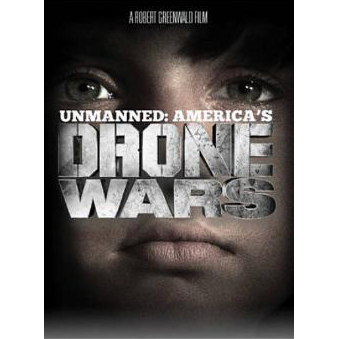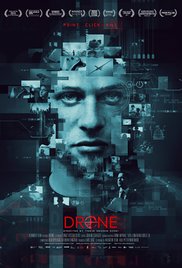CHAPTER 3 - Networked Communications (Freedom of Speech)
Important Points from chapter pertaining to topic of drones
Social-Technical Solutions (ex. New technologies for new problems like spam filters for email)
Internet
IoT, Commerce, Crowdsource opinions and funds
Security of IoT? Are drones IoT?
Some technologies (like texting) can help Developing countries...does drone information collecting help?
Political Activism
Talking about Drone program (hot topic in elections?)
Government Filtering communications and surveillance of others networked communication (ex. Through various controls on internet in different countries)
Examples from the sources
[8] This article paralells the chapter talking about the Pakistani non-profit that goes around and documents uses of drones for attacks or surveillance. The man disseminates the photos and videos on the internet and crowdsources opinions to raise awareness. The point of view of the article is that of a reporter who was contacted by an activist to show them on their networks.
Another interesting angle to look at surveillance is through the lens of the law. In [10], a company that aggregates research to be used by lawmakers in making informaed decisioons brings up the point of what happens after the information is viewed? So for example, if you are surveilled by a drone in a public place it may be legal but is collecting and storing all of this information the same as just viewing?Surveillance drones can watch a person for multitudes of time but is it a violation of privacy if the footage of that person or other people who may have involuntarily ended up in the footage to be stored without their knowledge, or furthermore shared and used by the government? It is an interesting angle to think about when taking about after the surveillance but one which our group thinks should be addressed.
The chapter goes into political activism and article [11] makes the case against drones from the viewpoint that the drone program is funneling a large amount of funding from other programs and that the government should divert funding from drones to other programs.
[13] This article applies to the chapter in an interesting context. The chapter talks about technology helping developing countries and ways that we could advance the process. The article speaks about the U.S. establishing drone bases in various countries, some of which would be considered “developing”. They are known to run missions tracking down and taking out noted world terrorists or strongholds but also run mission that could be seen as helping the countries like trying to deter pirates in the Somali region.
Drones could also be used to help developing countries by delivering things like health care supplies or imaging from remote areas. [19] If the drones could be modified to carry things they could be used to deliver life-saving medical supplies or collect samples to help diagnosis.
CHAPTER 4 - INTELLECTUAL PROPERTY
Drone Patents [36]
- Innovators are making rapid advances and finding valuable solutions to difficult problems in the drone industry
- Drones can be extremely complex. Drone development involves many different disciplines. In addition to aeronautical and mechanical engineering, drone development can require expertise in electronics, computers, software, materials, communications, power, propulsion and operations.
- Some patents… [37]
- Device for remote transfer of energy to a moving object by acoustic waves
- Method for optimizing the orientation of a remote-control device with respect to a rolling drone
- Process for preparation of dronedarone by oxidation of a hydroxyl group
- Flying car or drone
- Drone assisted adaptive robot control
- Automated drone systems
- Adjustable weight distribution for drone
- Amazon has patented a drone charger fitted onto street lights [38]
- Drone might run out of battery (delays, heavy payload, long trip, etc…)
- Multi-use UAV docking station system that lives at the top of one of a city’s ubiquitous street lamps
- Lots of reasons this idea isn’t totally feasible and won’t be implemented
- Costs a lot to pay city to allow for use and modification of street lights
- Having flying things above pedestrians and cars is a potential hazard
- Top applicants for drone patents are aerospace companies and large manufacturers [39]
- Boeing, Raytheon, Lockheed, Aerovironment, Honeywell, American Armed Forces
- Anti-drone drone patents [40]
- A drone that flies around with a net that has a large cross-sectional area
- Used to capture / disable drones that shouldn’t be where they are.
- If there’s a surveillance drone where there shouldn’t be one
CHAPTER 5-6 - Privacy
UAVs present unique privacy challenges, due to the manner in which they may collect information .. the ability to gather information dynamically from unique vantage points would appear to distinguish UAV use from other video surveillance cameras ..
1986 - viewing from public air space does not count as search
2001 - view with thermal from public space counts as search
Cause tec was not available to public
U.S. Supreme Court, in United States v. Jones
Tracking device on car on public roadways = search
Association for Unmanned Vehicle Systems International (AUVSI)
issued an Unmanned Aircraft System Operations Industry 'Code of Conduct.'
No one to enforce
Ryan Calo - 'Cold tecnology embodiment of observation'
Data important to correlate to Smart phones
EPIC has stated that 'because drones possess unparalleled surveillance capabilities, the FAA should assess and prevent privacy risks before drones are further deployed.'
Worried about drone hacking
Drone License
List of things to put on application to do with privacy page 13
Different than manned aircrafts, their sight better than man's quote
Thus ACLU recommends cool restrictions page 13
Referered to some pages those Arein this link
http://www.publicsafety.gc.ca/lbrr/archives/cnmcs-plcng/cn29822-eng.pdf
CHAPTER 7 - CRIME
Criminals, always looking to gain some sort of advantage over their victims, constantly use emerging technologies that others have yet to learned to protect themselves from. As the Internet has grown from a small educational network to a massive global network of 2 billion users [1], cyber criminals stay one step ahead of most users to exploit security flaws in systems.
Unlike many other technologies, surveillance drones have not been used by criminals for their advantage. Perhaps this is because drones, let alone surveillance drones, don’t offer anything that a criminal could use to their advantage. It may also be that regulations on aircraft are too stringent, and that criminals are not willing to accept the punishment for crimes such as the hacking of a government aircraft [2]. Even the use of small drones can be punished by arrest and heavy fines in certain situations [3].
That being said, drones are becoming more and more prominent in crime. In the United States, law enforcement agencies have used drones for surveillance to detect crimes, and as a tool to assist operations. One example of drones being used to detect crime is on the border between USA and Mexico to find illegal immigrants crossing the border [4]. Another example is the SWAT team’s use of a drone to locate and arrest a suspected criminal [5]. Both of these unconventional usages of unmanned aircrafts are interesting case studies to examine whether or not drones should be used in law enforcement.
In 2011, the United states used eight predator drones for Customs and Border patrol. The drones used to protect the border are Predator B Drones, identical to those used in Iraq, Afghanistan, and Pakistan but unarmed. Despite the absence of weapons on board, the drones quickly proved their potential for danger in 2006, when an engine was shut off accidentally and the drone plummeted to the ground. It missed a residential area by only 1,000 feet [4].
Despite this near catastrophic incident, major concerns about the use of drones over the border focus on privacy. Although most U.S. residents are unaffected by these drones in particular, those living along the border between USA and Mexico (a heavily populated area) certainly are. With a surveillance drone flying miles overhead, backyard sunbathers worry that they are losing their privacy. Advocates for drones, however, state that surveillance via planes and helicopters is already used, and citizen’s rights to privacy end when they go outdoors.
An important factor in determining whether or not the drones are worth the risk of privacy and safety is the effectiveness on the border. Domestic drones have cost the government and estimated $240 million, plus $3,600 and one hour of maintenance per hour of flight [6]. In 2014, the Department of Homeland Security released a report on the use of drones on the border. They concluded that drones are not worth the cost of operation [7].
In 2011, an American man was arrested with the help of a predator drone for the first time. After refusing to return cows that wondered onto his property, the SWAT team used a Predator Drone to find him and arrest him safely. Robert Bossart, the arrestee, claimed that the use of the drone was illegal. The courts, however, did not agree. In 2012, a U.S. District Judge upheld the use of the drone. Brossart was found guilty of terrorizing police.
CHAPTER 8 - Errors, Failures, and Risk
Data entry or retrieval errors
Doesn’t necessarily pertain much to the surveillance side of drones. What happens if the wrong person or locations are fed to the drone and another person is watched? What happens if the person they miss because of wrong data is susceptible to terrorist acts that could have been caught?
Another form of error to investigate comes with the drone’s reliance on a connection. It continually needs to stay in contact with the radio host controlling it or transmitting commands. What happens if it loses connection, doesn’t know what to do without commands, and crashes into a building with people in it?
Software and Billing Errors
This section brings up a lot of interesting questions in regards to our technologies.
Similar to the debates about autonomous vehilcles picking the “lesser of two eveils” in ethical decisons, drones do what you tell them to do. What happens if they are told to strictly stay in one spot but that spot is in the flight path of a passenger plane?
With software errors think about what could happen if coordinates are entered incorrectly. For example, what if someone wants 37 degrees west but the program doesn’t sanitize 37 to -37 (relative to the meridian)? This drone now would head towards that location and spy in another country or have other unintended consequences. Does the intention justify the mistake? Similarly what if a pilot sees a plane coming towards the drone and the software wrongly interprets to climb x number of feet instead of fly down x number of feet and causes a crash?
Software Engineering
Much of this section does not appear to be relevant to surveillance drones
One section that is interesting to think about through the lens of drones is the section about gender.
The Pew Research Center shows there is much of a gender gap in terms of support of the government’s use of drones. Only about half of women support use of drones while over two-thirds of men do. [21]
Software Warranties and Vendor Liability
Much of this section doesn’t pertain to surveillance of drones but in more in-depth research of drones could be applied heavily to commercial and private use scenarios.
Examples from the sources
One big issue surrounding the risk of the use of drones is with property rights. The issues arise mainly with flying over private property. Since the Florida v. Riley case determined that flying over private property was not illegal citing that helicopters and planes do so often, there has been tensions over the fact that these many helicopters and planes most always do not record anything beneath them [16]. A further legal ramification stems off of this in terms of searching. To search a property, law enforcement needs a warrant issued by a judge but if police started using drones would they require a warrant to fly over and record a private property? This question is posed in [16] as well, in addition to the conversation over whether the FAA should have legal jurisdiction over any “American airspace” while they currently only hold it over major flight areas like borders, military bases, and airports.
So it’s legal to fly over property since planes and other aircraft do but should the altitude at which the flight occurs come into play? Certainly a case could be made taking into account someone trying to fly a drone at 10,000 feet overheads as opposed to 100 feet over private property. A new legal study has been prompted over drone technology as to whether or not a person owns a certain amount of airspace over their property when they purchase it. [16]. The only real clarification that has come out of this was all the way back in 1946 with the Causby v. United States trial which determined a person owns “indefinitely” the space above their property but at reasonable altitudes aviation could claim public domain as an “aviation highway”.
Another interesting risk and angle to view drones is in [13] entitled “Do Drones Undermine Democracy?”. It makes the point that operations revolving the Government’s foreign policy decisions have always had a healthy amount of checks-and-balances because things like surveillance have always involved sending actual people to carry out these missions. As of late, they make the case that with unmanned drones having such increased capabilities, that there has been less vetting and discussion over the use of drones for surveillance and war overseas and whether or not this undermines democracy due to people’s nonchalant attitudes over the outcome of various missions when you’re not putting people in harm’s way. With the consequences of these decisions always popping up in the news, it’s an interesting angle to follow in the near future.
CHAPTER 9 - PROFESSIONAL ETHICS
Drones and professional ethics are two topics that are closely related. It is no secret that drones are involved in, what some consider, unethical conduct. This unethical conduct can range from surveillance of backyards near the U.S.A. Mexico border to the use of a drone to kill in war. Behind every drone is a large number of professionals who have worked to develop, build, and control it. Each one of these professionals faced a moral dilemma, whether they knew it or not.
Not all drones are created equal, and as such not all professionals involved in the production or development of drones face severe ethical concerns. However, many drones have cameras attached to them, as well as audio monitoring devices, speakers, etc. Despite the many productive uses that a camera mounted to a drone can have, such as wildlife conservation [26] and search and rescue assistance [27], any camera-equipped drone raises privacy concerns, usually from those who live close to where a drone flies. In addition to privacy concerns, all drones are associated with safety concern. All professionals working with drones must weigh these two ethical concerns with the benefit their drone will have. To analyze whether work on a drone is ethical, professionals may use act utilitarianism.
Software engineers who work on data collection and drone vision face substantial ethical concerns. In the case of police drones, which are very likely to collect identifying information about people [26], software engineers must consider the crime reduction benefits versus privacy of those that are being monitored. In many cases, the public as shown to be disapproving of surveillance drones, which may help professionals involved recognize the privacy concerns. In Los Angeles outside of the Staples Center stadium, a crowd knocked a drone out of the air, believing it to be a police surveillance drone. Despite the fact the drone was neither owned nor operated by the LAPD [28], LAPD Chief of Police responded by stating "I will not sacrifice public support for a piece of police equipment," [29]. On the other hand, drones have been shown to benefit citizens as well as police. In an active shooter situation in Arlington Texas, the police department used a drone to find the location of the shooter. The information was passed on to the police officers, who used it to find themselves safer positions [29]. There are very clear possible advantages and disadvantages to surveillance drones, all of which software engineers, and anyone else involved professionally with drones, must consider before carrying out their work.
In addition to privacy concerns associated with drones, there are also safety concerns about the aircraft themselves. Major safety concerns involve collisions in the air and on the ground. Many drones lack anti-collision transponders that are most often installed in piloted planes [30], making them dangerous to fly in an area where any other aircraft may be flying. A more common concern for the safety of drones is collisions with people on the ground. In December of 2015 during a World Cup slalom ski race, a camera drone fell from the air and nearly collided with a skier [31]. Perhaps if the software engineers had programmed the drone to detect when it is failing, and move to a safe area, the drone would have been substantially safer.
CHAPTER 10 - WORK AND WEALTH
This chapter does not have to do with our topic a whole lot. The focus was about how machines will eventually replace people and our topic is about how drones can be used for surveillance. While it is possible, and even likely, that drones will take jobs from people such as delivery truck drivers, photographers, farmers, mailmen, and more, there aren’t a whole lot of surveillance jobs that they will take.






